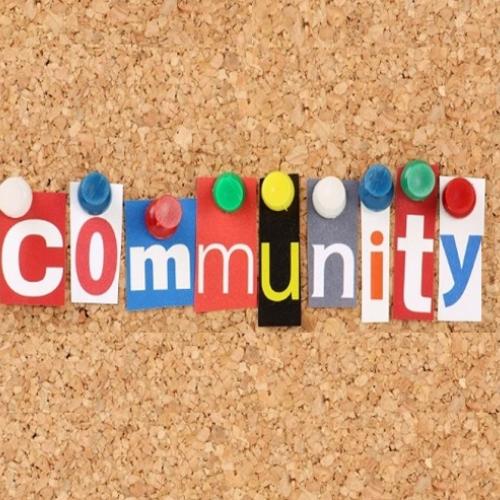
For as long as people have pursued shared goals, teams have been part of the equation. In school, we form teams to study, complete projects and compete on the playground. In sports, teams collaborate to win championships and thrill fans. And in the workplace, teams are the essential building blocks for getting work done. Instinctively, we all know how good teamwork feels. But in spite of (or maybe because of) our experience observing and being part of teams, we often overlook the basics of how we practice teamwork.
We’ve all seen professional sports teams that are stacked with talent but continually underperform. On these teams, the most surefire way to improve performance is to reconnect with the basics of teamwork and elevate what I call “team fitness.” These are the soft skills that enable people to embrace others’ points of view, debate ideas constructively, and create an environment of trust and openness. For some teams, this is basic stuff. For others, achieving team fitness might feel like a distant dream. But with some simple tools and processes that fuel a daily practice, any team can dramatically improve its ability to get the most out of its collective talent.
“…the most surefire way to improve performance is to reconnect with the basics of teamwork…”
How Does Your Team Rate?
The first step in addressing your team’s fitness is to perform an assessment. If you asked your team to agree or disagree with the following statements, how many symptoms of poor team fitness would you identify?
- You feel like you spend your entire day in meetings.
- You wonder why you are invited to meetings (but show up anyway).
- You attend meetings or join calls that don’t have agendas.
- Conversations don’t lead to decisions because the right people aren’t present.
- The “real” meeting and decision-making takes place within a smaller group.
- People complain about each other, but don’t give direct feedback.
- As the weeks go by, the effectiveness of your teamwork doesn’t improve.
- You feel that you can get more done by working independently.
- Relationships on the team feel surface-level.
- One of your most valuable skills is your ability to operate in a state of ambiguity.
If these feel familiar, you’re not alone. Very few of the client teams I encounter are aware of their fitness (let alone working to improve it). These are the teams that stand one conversation away from improving results. When a single team gets serious about its fitness, it works better, smarter, and faster. At scale, team fitness across an enterprise can dramatically improve results and shift the culture. In times of change, team fitness accelerates an organization’s ability to move in a different direction. Moreover, on a daily basis, team fitness improves how people feel about their jobs.
“In times of change, team fitness accelerates an organization's ability to move in a different direction.”
Team Fitness Basics
At Nvolv, we believe leadership must evolve, and as such, there is room to improve fitness on every team—from executive teams to Agile-based scrum teams. Any team can put into practice the following basic behaviors in order to improve how they work together.
Have Clear “Inputs” to Team Meetings: Agendas and Pre-Work
You can think of team meetings like a machine: the quality of the inputs—like the agenda or pre-work—directly impacts the quality of the outputs. Too often, I see teams set meetings without first aligning on a set of topics to discuss, let alone an agenda. Without knowing the objectives, people cannot do the research, formulate a point of view, study a pre-read, or assess works-in-progress. If people don’t show up prepared, it’s almost impossible to have a productive meeting.
Every meeting should have an agenda, whether it’s a two-day offsite or a drive-by where you ask for fifteen minutes of someone’s time (in this case, a simple bullet list will do). By articulating what you want to get out of a conversation, you give your meeting a chance to succeed.
Define “Outputs” and Goals
How many times have you shown up for an hour-long meeting unclear on what decisions, agreements, or actions need to emerge? In the same way that every meeting needs a thoughtful set of inputs, teams also need to define high-quality outputs. This gives the group a way to work toward a destination, and even push beyond it.
Establishing clear goals also helps you identify who should be in the room. Do you have the right people to make decisions? Do you have multiple goals that aren’t relevant to all attendees? Would it be better to hold two meetings, with two agendas? Goals help clarify who should attend, how long you’ll need, and the ways people need to be involved. However, goals can be misleading if they are what I call “fuzzy goals”—vague outcomes that don’t drive progress. By making the goals of a meeting as specific as possible when setting agendas, you’ll improve the outputs of the gathering.
Ensure Role Clarity
Almost every company uses a responsibility assignment matrix that describes how individuals with different roles on a team need to participate. For example, RACI (Responsible, Accountable, Consulted, and Informed) designations help you determine who is required in meetings, and who can be optional. But many teams forget about the internal roles required to make a meeting successful, such as:
- Who owns the meeting? This is the person who sets the agenda (with input from attendees), makes sure the right attendees are present, takes on meeting logistics, and calls the meeting to order—and who may not necessarily be the person with decision rights.
- Who facilitates the meeting? This could be a team member or someone from outside the team who can steer the conversation to make sure it serves the goals.
- Who documents the meeting? We often call this person the “scribe”—tasked with capturing key points in the conversation, agreements, and outputs. The caution here is to rotate this role so that it does not always fall on the same person.
- Who is responsible for technology? I can’t tell you the number of times where the first fifteen minutes of a meeting were wasted by trying to get a conference bridge or video link to work.
With clarity on internal roles, meetings run more smoothly. Everyone invited should have a clear role to play—from providing expertise to running the meeting. The most productive meetings are the ones where there are no spectators.
“The most productive meetings are the ones where there are no spectators.”
Adopt an Appropriate Process
When teams need to make a decision, a good process ensures there’s rigor in the thinking and alignment around the outcomes. One company I worked with last year rejected team processes because they felt “unnatural” to how they operated. As a result, their team meetings took on a superficial quality that a few team members described as equivalent to having eaten “empty calories.” To make the meetings feel more “nutritious,” we started by going around the room at the beginning to identify what people wanted to get out of their time together. This simple framing process instantly improved their meetings, and it prepared them to try on better-suited processes down the road. The lesson here is that the best process is the one that the group can understand and embrace at that moment in time.
Teams use different processes for different interactions, but the mantra I’ve always relied on is, “Keep it as simple and appropriate as possible.” The more tangible and specific you make the process, the easier it is to engage with. For example, a brainstorming meeting designed around a three-step process (e.g., 1. Generate ideas individually; 2. Pin up and organize the ideas; 3. Discuss and prioritize) can create more momentum for some teams than an open-ended “free-for-all” conversation. A high-level strategic conversation might help a group align around possible directions, and then a more disciplined process will help them assess each option.
Spending time to design an explicit process that helps a team have the right conversations takes time and planning, but this investment allows teams to hit the ground running when they come together, and to produce better outcomes.
Agree on Ground Rules: How You Behave Together
Establishing ground rules is a two-step undertaking: creating the rules, and then living them. Standards teams set for themselves—such as speaking honestly, showing up prepared, being on time, communicating respectfully, or limiting technology distractions —provide visible guardrails for a team’s behaviors. The harder part is determining how team members are to hold themselves accountable for following these ground rules.
When Nvolv is engaged with a client over several weeks or months, we regularly check in on a team’s ground rules and ask, “What have we done well? Where do we need improvement? What ground rules do we need to add or remove?” In the course of these conversations, people have revelations about what stands in the way of better teamwork, showing up the next week more focused on improving team fitness. The list of ground rules should be a living and breathing entity. When teams look critically at their behavior, they will constantly find new ways to raise their standards.
“In the course of these conversations, people have revelations about what stands in the way of better teamwork…”
Prioritize and Delegate
When a team feels it has too many things on its plate, team fitness suffers as people start to cut corners in how they work with each other. When Nvolv partners with clients to help gain clarity on their current situation and goals, one method we employ is to put client teams into a metaphorical foxhole for 120 days and ask them to address a complex business problem—in addition to doing their day jobs. This creates tensions that leaders have to address proactively. Instead of suffering silently (or loudly), leaders need to communicate to their teams how they are being stretched and engage the entire team in a conversation about prioritization. This conversation aims to identify what responsibilities they can delegate and to whom—balancing the needs of their teams with the opportunity to develop someone.
Likewise, long-standing functional teams also need to address prioritization and delegation regularly. What can the team prioritize to serve the organization in the current business context better? What does each person need to prioritize for his or her growth? What responsibilities can members delegate to help others grow—and to free up time for their own development?
Whenever the subject of prioritization and delegation arises, I advise clients to try it to see what happens. They’re often surprised at how people step up to new opportunities. Moreover, they often realize that at some point in their career, they got the opportunity to step up similarly.
Establish Trust
When you pursue team fitness, you are always “in training” and looking to improve how you work together. One of the most profound results is how this level of mindfulness builds trust among the members—which pays off when the team is under pressure. When we ask people to reflect on the journey they had taken with their teams, the overwhelming set of responses relates to the deepening of relationships during that time. People get to know each other much more intimately when they are under pressure and learn to communicate with a higher degree of honesty, transparency, and accountability. And when they see what teams who trust each other can accomplish, they want this on all of their teams.
Self-Assess
Great teams are always assessing themselves—embracing the concept of continuous transformation. Like athletes watching game film, they break down their actions and reactions to understand how they’re performing as a unit. Nvolv regularly and candidly communicates with our client partners to reflect on what went well in an interaction and what didn’t. This provides instant feedback on how people are showing up and upon what they can improve. These conversations are quick, but they allow for the course corrections that keep a team moving toward its goals.
Imagine how quickly your teamwork could improve if you were able to call a time-out every day to assess and make adjustments. If you spent even 10 minutes a day explicitly grading your teamwork, I guarantee that your teams will reach a new level of productivity, trust, and results after a few weeks.
“Like athletes watching game film, they break down their actions and reactions to understand how they’re performing as a unit.”
Get Fit Today
Are you on a team that wants to take the first step toward improving its effectiveness? A team that’s serious about working smarter, better, and faster? Here are four things you can start doing today to become more fit as a team:
- Ensure there is an agenda, and set clear goals and roles for every meeting.
- Develop Ground Rules, hold each other accountable to them, and evolve them to elevate the team’s performance.
- Identify one process that can add structure to your meetings and the way your team interacts.
- Assess your teamwork daily by talking about what you did well, and what you can do better.
None of these activities ask people to develop skills they don’t already have—they only ask that you bring more mindfulness to how your team works together. Team fitness is a practice that costs almost nothing to implement, and it can radically improve a team’s and an organization’s ability to deliver results.






